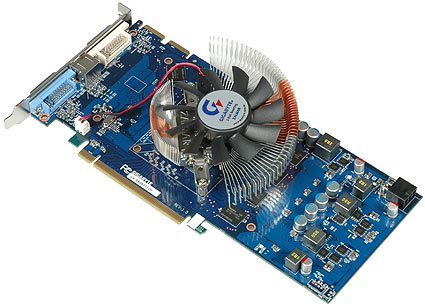Tom's New Reference System
Graphics: Gigabyte GV-RX385512H, Radeon HD3850
The graphics card has always been an item that spurs emotional discussion. We did not look for the best and the latest here, but rather a reliable and reasonable workhorse that is capable of serving us for the upcoming months. Our choice was a card based on ATI's Radeon HD3000 series, and we found a suitable product in the Gigabyte portfolio: the GV-RX385512H. The GPU cooler differentiates this product from other cards, as Gigabyte equips the RX385512H with a Zalman cooler.
The RV670-based graphics card operates at a 670 MHz core clock speed with 512 MB DDR3 memory running at 1,660 MHz in DDR mode (830 MHz base clock speed). The 55 nm, 666 million transistor Radeon HD3850 core supports Shader Model 4.1 and hence is DirectX 10.1 compliant. More importantly, these products already utilize PCI Express 2.0, which doubles the bandwidth of PCI Express 1.1. Typically, this is not yet necessary for stand-alone graphics cards, as the 4 GB/s upstream and downstream at x16 PCI Express 1.1 are still sufficient for most graphics cards. However, a motherboard with 16 PCI Express 2.0 lanes will provide the same bandwidth as a more complex model based on 32 PCI Express 1.1 lanes.
The Radeon HD3850 can be considered the most energy-efficient upper mainstream 3D solution available today, as you can see in our review, AMD Radeon HD 3800: ATI Strikes Back. While other high-end cards require almost 100 W while idle, this card stays under 100 W under full load.
Get Tom's Hardware's best news and in-depth reviews, straight to your inbox.
Current page: Graphics: Gigabyte GV-RX385512H, Radeon HD3850
Prev Page Processor Cooler: Zalman CNPS9700LED Next Page Hard Drive: Western Digital WD5000AAKS (500 GB)Tom's Hardware is the leading destination for hardcore computer enthusiasts. We cover everything from processors to 3D printers, single-board computers, SSDs and high-end gaming rigs, empowering readers to make the most of the tech they love, keep up on the latest developments and buy the right gear. Our staff has more than 100 years of combined experience covering news, solving tech problems and reviewing components and systems.


